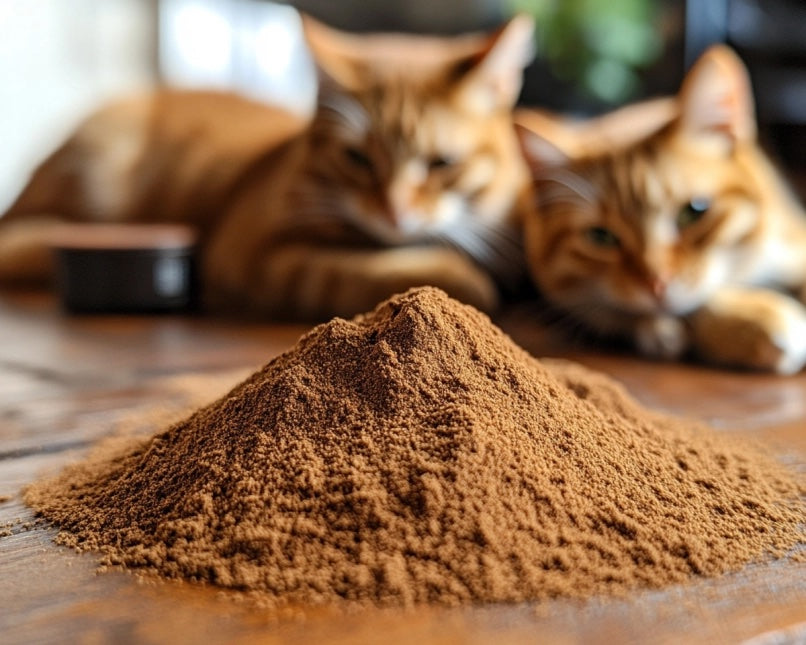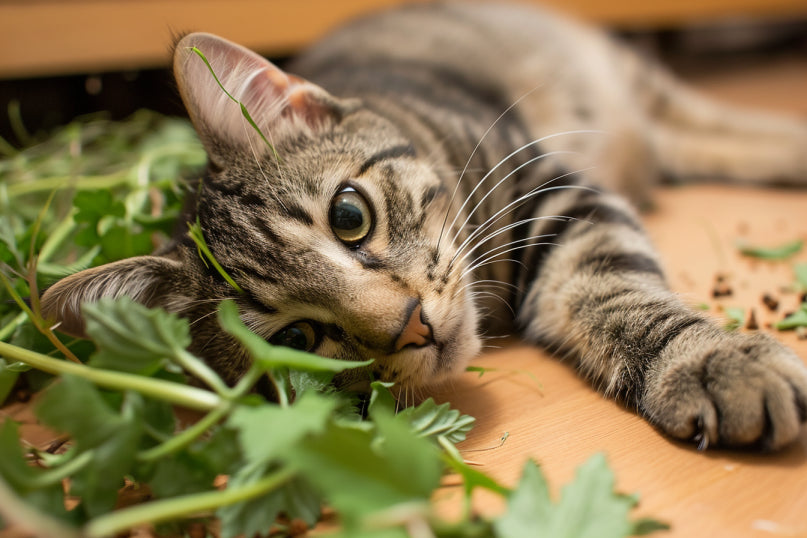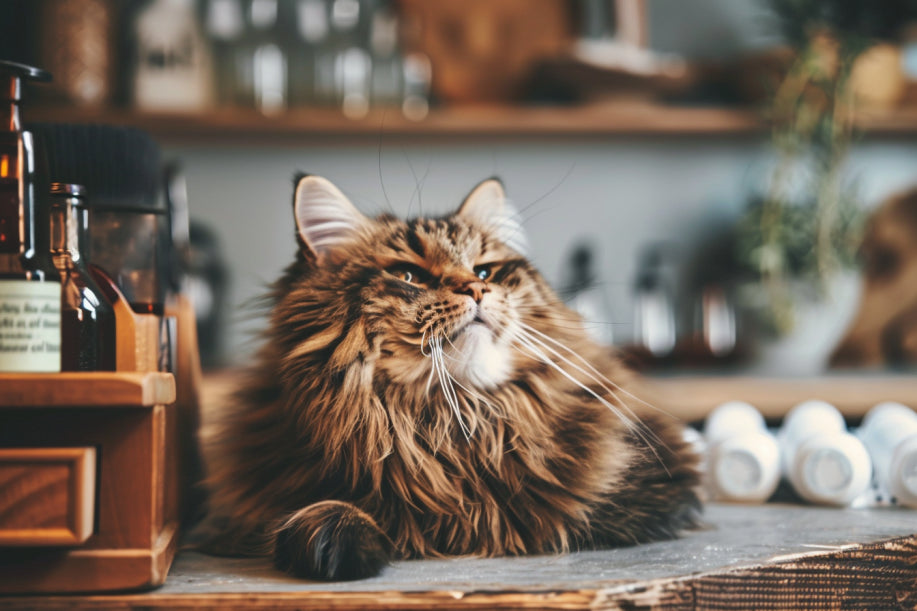
If you have ever lived with a cat, you probably know about the big daddy of kitty herbs: catnip.
A recent study found that 32% of cats do not react to the stuff. Scientists don't really know why some kitties ignore catnip. One theory is that these cats simply lack a “catnip gene”. It is linked to where your cat's breed came from and if catnip grew there.
Did you know there is a catnip alternative that can add some extra pizzazz to the lives of cats that do not go batty for 'nip?
If your kitty ignores catnip toys, sprays, and leaves, have no fear: Tatarian honeysuckle can send your cat to blissville.
What is Tatarian honeysuckle?

Tatarian honeysuckle (Lonicera tatarica) is a multi-stemmed, upright, woody perennial bush. It is native to Siberia and Eastern Asia.
In the United States and Canada, Tatarian honeysuckle is an invasive species and noxious weed. It can invade fence rows, open woodlands, roadsides, and thickets. While the 8-to-12-foot shrub thrives in partial sun and moist, loamy soil, it can grow in full sun or shade and clay, rocky, or sandy soils.
Tatarian honeysuckle has egg-shaped, bluish-green leaves. It also has dark grayish-brown bark that peels in vertical strips.
In mid-to-late spring, Tatarian honeysuckle produces pinkish-red trumpet-shaped flowers. They smell like honey with a hint of vanilla.
After being pollinated by bees, hummingbird moths, and ruby-throated hummingbirds, they become bright red berries that contain many seeds. The 0.25-inch berries are eaten by at least 17 species of songbirds during the winter months.
Is Tatarian honeysuckle safe?

Unlike catnip and other catnip alternatives, Tatarian honeysuckle berries, flowers, or leaves shouldn't be given to cats or dogs.
That's because they contain cyanogenic glycosides. These plant toxins can cause rapid heartbeat, vomiting, diarrhea, sweating, and dilated pupils.
Tatarian honeysuckle sprays, sticks, sawdust, and wood slices are safe for adult cats and kittens. Tatarian honeysuckle wood slices are more likely to crack, sliver, or splinter than sticks.
“Wrap honeysuckle in a sturdy piece of cloth to prevent your cat from digesting it as it can be a choking hazard,”says Nora Glover, the founder and editor-in-chief of Catademy. For example, stuff honeysuckle sawdust into a refillable catnip cat toy. Or shove it in a thermal sock and tie it closed.
Misting honeysuckle with water brings out its aroma and makes it more attractive to finicky felines. While catnip only stays fresh for 6 months in an airtight container, a slice of honeysuckle will keep for at least a year.
“Honeysuckle toys do not need any special storage and can simply lay around the house for your cat to play with,” Glover says. “As for honeysuckle spray, you need to store it in a dry, cool place without direct sunlight.”
How do cats respond to Tatarian honeysuckle?

According to a 2017 study published in BMC Veterinary Research, 53% of adult cats respond to Tatarian honeysuckle. But there's no data that suggests kittens are more likely to respond to Tatarian honeysuckle than to catnip.
Tatarian honeysuckle contains a non-addictive neuro-stimulant called actinidine."It does not cure any conditions in cats and only serves as a source of aroma joy for them,” Glover says.
Most cats respond to Tatarian honeysuckle toys the same way they respond to catnip. They will growl, drool, meow, purr, knead, roll around, and pounce on everything in sight. “Some cats may get sleepy after playing with a honeysuckle toy, and that is normal too,” Glover says. Some cats like to hug their Tatarian honeysuckle toys while they are napping. This spaced-out or dreamy mood can last up to 2 hours.
After studying 106 cats, scientists found that Tatarian honeysuckle doesn't cause any aggression. But some cats may simply lose interest in honeysuckle if they are exposed too often. If the effect starts to diminish, limit their exposure to honeysuckle to several times a week.
Spritzing Tatarian honeysuckle with water may increase its smell for humans. But research suggests sprinkling the wood with water won't increase your cats response to it.
What is the difference between catnip and Tatarian honeysuckle?
|
Catnip |
Tatarian Honeysuckle |
|
|
|
 |
 |
|
Scientific names |
Nepeta cataria |
Lonicera tatarica |
|
Nicknames |
Catswort, catmint |
Bush honeysuckle |
|
Grows in |
Asia, Africa, Europe, and North America |
Siberia, Eastern Asia, United States, and Canada |
|
Plant type |
Herbaceous plant |
Woody, perennial shrub |
|
Chemicals that attract cats |
|
|
|
Ingestion effects |
None |
|
|
Inhalation effects |
Playfulness, hyperactivity, rolling, rubbing, & running |
|
|
Percentage of cats that respond |
68% |
53% |
Follow Munchiecat on Facebook, Instagram, Kickstarter, and Pinterest.


